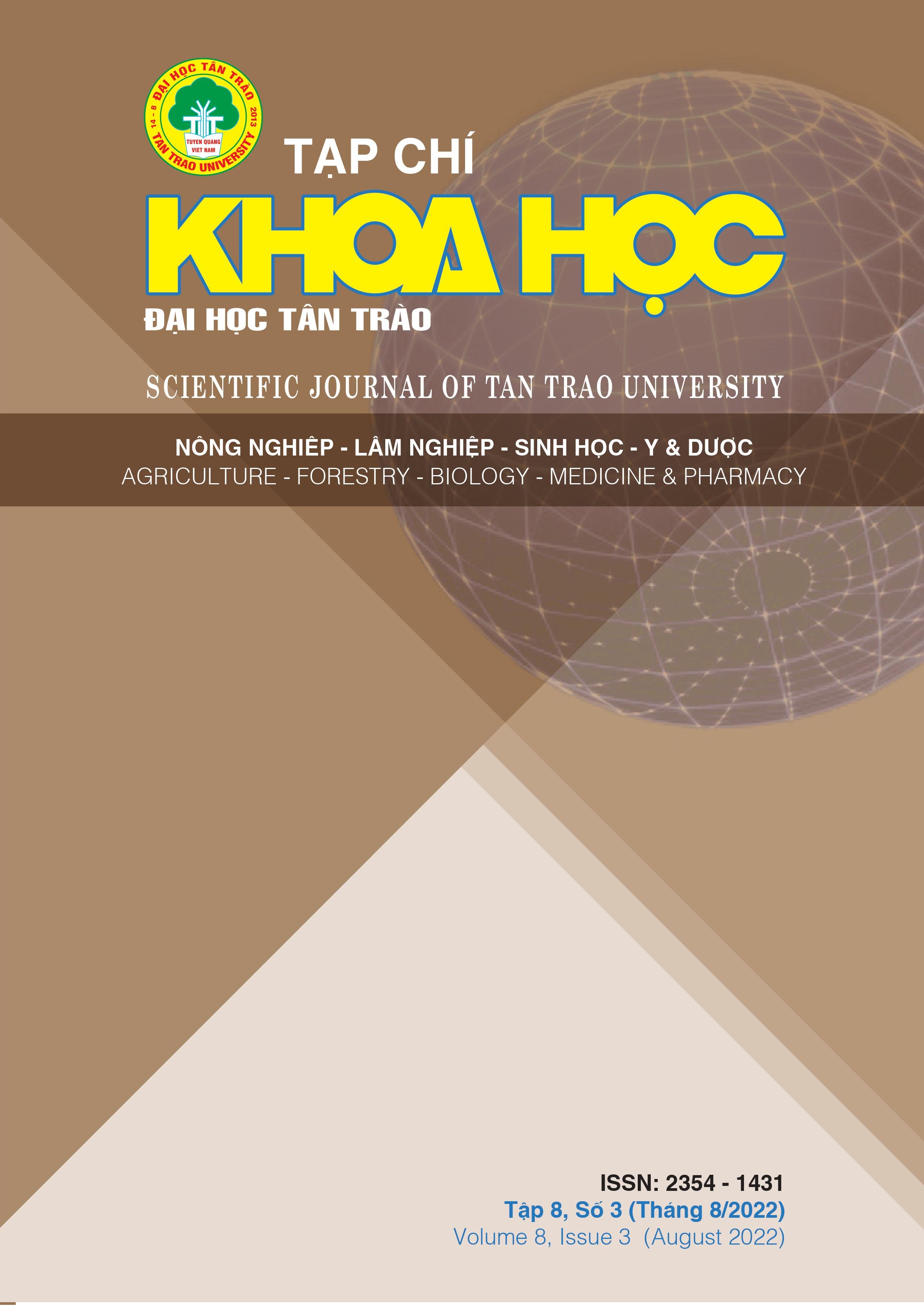INVESTIGATION AND ASSESSMENT OF THE ROLE OF THE COMMUNITY IN THE CONSERVATION OF SOME RARE MEDICINAL PLANT SPECIES IN THE NAM DONG VALUABLE GYMNOSPERM CONSERVATION AREA, THANH HOA PROVINCE
DOI:
https://doi.org/10.51453/2354-1431/2022/797Keywords:
Conservation, medicinal plants, biodiversity, Nam Dong Valuable Gymnosperm Conservation Area, Thanh Hoa provinceAbstract
This paper introduces the research results about the role of the community in the conservation of some rare medicinal plant species in the Nam Dong Valuable Gymnosperm Conservation Area, Thanh Hoa province. As a result, we recorded 21 species belonging to the Vietnam Red Data Book (2007) as Endangered (five species) and Vulnerable (16 species). The survey evaluated 10 roles of local organizations and identify the advantages and disadvantages, opportunities and challenges of the community in the conservation and development of medicinal plants. The study also offers 2 main solutions to the conservation and development of medicinal plant resources research area. That situ Conservation (Insitu), also known as protected species live where and Conservation trans (Ex-stu) is the conservation of bonobos in artificial conditions under the supervision of the people.
Downloads
References
[1]. Bộ Khoa học và Công nghệ (2007), Sách đỏ Việt Nam, Phần thực vật, NXB Khoa học tự nhiên và Công nghệ, Hà Nội.
[2]. Brummitt R. K. (1992), Vascular Plant families and genera, Royal Botanic Gardens, Kew.
[3]. Đỗ Tất Lợi (1999), Những cây thuốc và vị thuốc Việt Nam, NXB KH & KT, Hà Nội.
[4]. Nguyen Huu Cuong, Averyanov L., Egorov A. and Bui The Doi (2020), Conservation status of conifers in Nam Dong Conservation Area (Thanh Hoa Province, northern Vietnam), IOP Conf. Series: Earth and Environmental Science 574 (2020) 012012. doi:10.1088/1755-1315/574/1/012012
[5] . Nguyen Huu Cuong, Averyanov L. and Egorov A. (2020), The diversity of dicotyledonous edible plants in Nam Dong Conservation Area, Thanh Hoa Province, northern Vietnam, IOP Conf. Series: Earth and Environmental Science 574 (2020) 012013, doi:10.1088/1755-1315/574/1/012013
[6] . Nguyen Huu Cuong, Averyanov L., Egorov A., Bui The Doi and Phan Thanh Quyet (2021), Traditional knowledge on non-medicinal plants used by the tribal people in Nam Dong Commune, Quan Hoa district, Thanh Hoa provice, nothern Vietnam, IOP Conf. Series: Earth and Environmental Science 876 (2021) 012053, doi:10.1088/1755-1315/876/1/012053
[7]. Nguyễn Tiến Bân (1997), Cẩm nang tra cứu và nhận biết các họ Thực vật hạt kín ở Việt Nam. NXB. KH & KT, Hà Nội.
[8]. Nguyễn Nghĩa Thìn (1997), Cẩm nang nghiên cứu đa dạng sinh vật. NXB. Nông nghiệp, Hà Nội.
[9] . Trung tâm môi trường và phát triển rừng bền vững (2016), Kết quả khảo sát đa dạng sinh học ở Khu bảo tồn các loài hạt trần quý hiếm Nam Động, huyện Quan Hóa, tỉnh Thanh Hóa, Báo cáo.
[10]. Нгуен Хыу Кыонг, Егоров А.А. (2021), Лекарственные растения лесов в горных районах заповедника Нам Донг (район Куан Хоа, провинция Тхань Хоа, север Вьетнама), Сборник материалов международной конференции по естественным и гуманитарным наукам, Санкт-Петербург, 2021. C. 255–256.
Downloads
Published
How to Cite
Issue
Section
License

This work is licensed under a Creative Commons Attribution-ShareAlike 4.0 International License.
All articles published in SJTTU are licensed under a Creative Commons Attribution-ShareAlike 4.0 International (CC BY-SA) license. This means anyone is free to copy, transform, or redistribute articles for any lawful purpose in any medium, provided they give appropriate attribution to the original author(s) and SJTTU, link to the license, indicate if changes were made, and redistribute any derivative work under the same license.
Copyright on articles is retained by the respective author(s), without restrictions. A non-exclusive license is granted to SJTTU to publish the article and identify itself as its original publisher, along with the commercial right to include the article in a hardcopy issue for sale to libraries and individuals.
Although the conditions of the CC BY-SA license don't apply to authors (as the copyright holder of your article, you have no restrictions on your rights), by submitting to SJTTU, authors recognize the rights of readers, and must grant any third party the right to use their article to the extent provided by the license.


